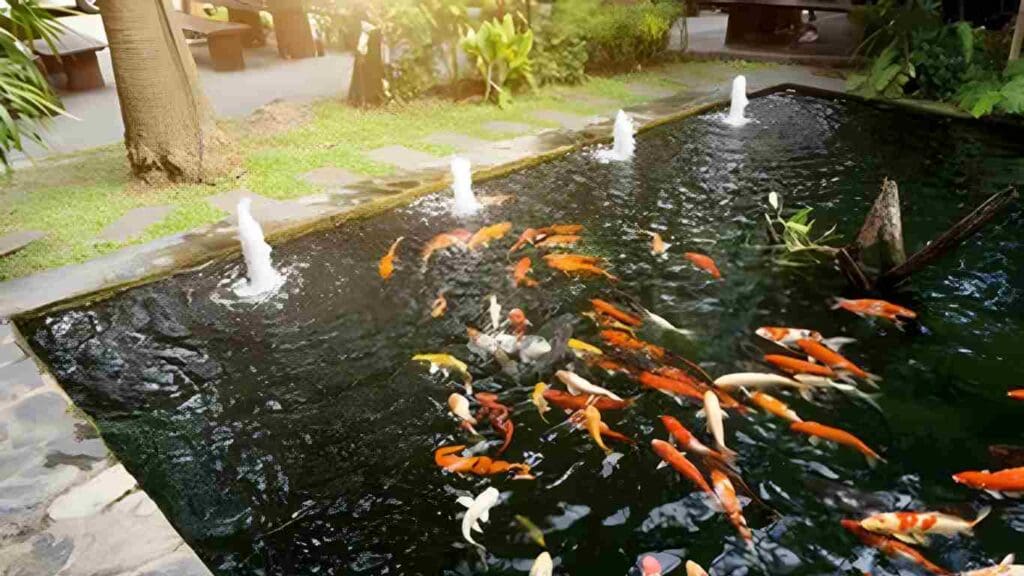If you’re considering building a koi pond, you may be wondering whether or not it needs a filter. The short answer is yes, koi ponds need filters to keep the water clean and healthy for your fish. While some people may argue that a filter is not necessary, it’s important to understand the benefits of having one.
Filters help remove debris, excess food, and waste from the water, which can lead to harmful bacteria growth and poor water quality. Without a filter, your koi may become sick and even die. In this article, we’ll explore the reasons why filters are necessary for koi ponds, the types of filters available, and how to choose the right one for your pond.
Do Koi Ponds Need a Filter?- Core Insights
By investing in a high-quality filter system and regularly maintaining it, you can ensure that your koi fish have a clean and healthy environment to live in, allowing them to thrive and grow to their full potential.
Importance of Filters in Koi Ponds
If you are planning to build a koi pond, one of the most important things to consider is the filtration system. A filter is essential for maintaining clean and healthy water for your koi fish. Without a filter, your koi pond can quickly become a breeding ground for harmful bacteria and algae, which can lead to health problems for your fish.
Filters are critical for koi ponds because they help to remove debris, waste, and other harmful substances from the water. Koi fish produce a lot of waste, and without a filter, this waste can accumulate in the pond and create an unhealthy environment. Filters also help to maintain the water’s pH level, which is crucial for the health of your fish.
There are two main types of filters for koi ponds: mechanical and biological. Mechanical filters remove debris and waste particles from the water, while biological filters use beneficial bacteria to break down harmful substances in the water. Both types of filters are important for maintaining a healthy koi pond.
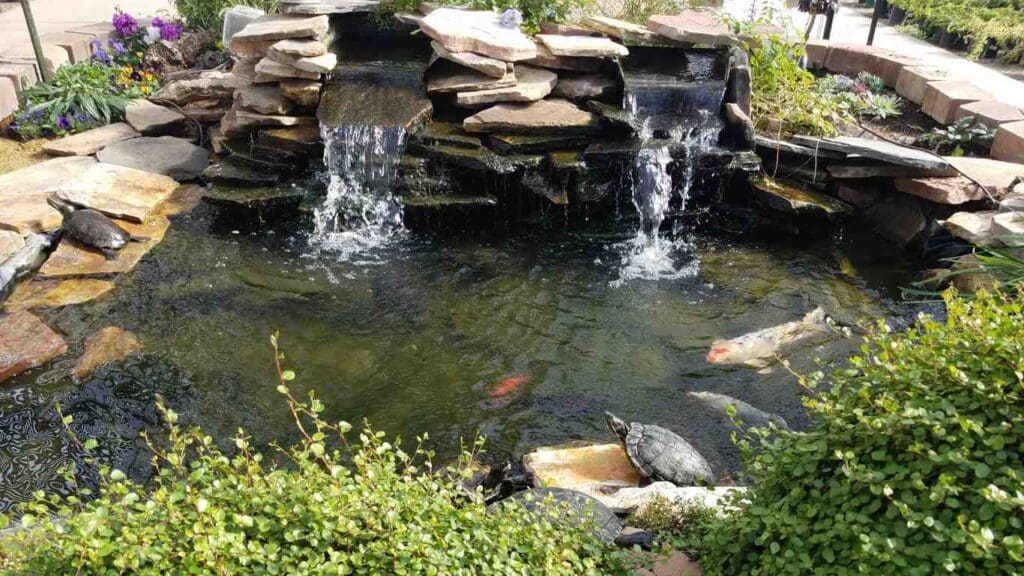

When choosing a filter for your koi pond, it is important to consider the size of your pond and the number of fish you have. A filter that is too small for your pond will not be able to keep up with the waste produced by your fish, while a filter that is too large can be expensive and unnecessary. It is also important to choose a filter that is easy to clean and maintain.
In short, filters are essential for maintaining a clean and healthy environment for your koi fish. They help to remove debris, waste, and harmful substances from the water, and maintain the water’s pH level. When choosing a filter for your koi pond, consider the size of your pond and the number of fish you have, and choose a filter that is easy to clean and maintain.
Different Types of Filters
When it comes to koi ponds, filters are an important part of keeping the water clean and the koi healthy. There are three main types of filters you can use: mechanical filters, biological filters, and chemical filters. Each type of filter has its own unique benefits and drawbacks.
Mechanical Filters
Mechanical filters are designed to physically remove debris and particles from the water. They work by trapping debris in a filter media, such as foam or filter pads. Mechanical filters are an essential part of any koi pond filtration system, as they help to keep the water clean and clear. However, they do not remove dissolved waste, such as ammonia or nitrite, from the water.
Grech Pond Bio Pressure Filter, UVC Upto 1600 gal, 13W
1 used from $95.00
Biological Filters
Biological filters are designed to break down dissolved waste, such as ammonia and nitrite, in the water. They work by providing a habitat for beneficial bacteria to grow, which convert harmful waste into less harmful compounds. Biological filters are essential for maintaining a healthy koi pond, as they help to prevent the buildup of harmful waste in the water. However, they do not remove physical debris from the water.
Chemical Filters
Chemical filters are designed to remove dissolved waste, such as ammonia and nitrite, from the water. They work by using chemical media, such as activated carbon or zeolite, to absorb harmful compounds from the water. Chemical filters are a useful addition to any koi pond filtration system, as they help to keep the water clean and clear. However, they do not remove physical debris from the water and should not be relied upon as the sole form of filtration.
In summary, a combination of all three types of filters is recommended for a healthy koi pond. Mechanical filters remove physical debris, biological filters break down dissolved waste, and chemical filters absorb harmful compounds. By using a combination of filters, you can ensure that your koi pond remains clean and healthy for your fish to thrive.
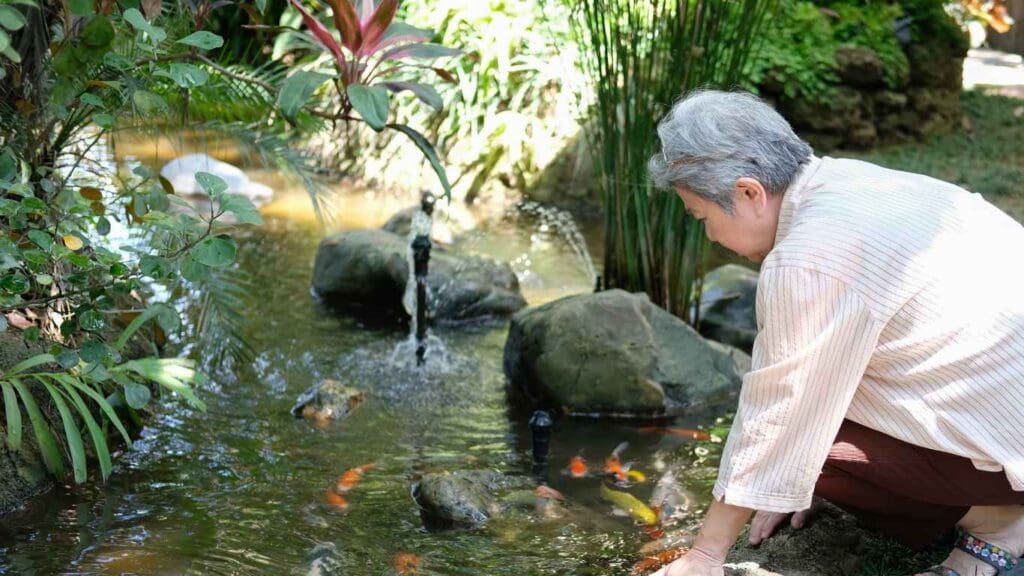

How to Choose the Right Filter
When it comes to choosing the right filter for your koi pond, there are a few things you need to consider. Here are some factors to keep in mind:
Pond Size
The size of your pond will determine the size of the filter you need. A filter that is too small for your pond will not be able to effectively clean the water, while a filter that is too large will be a waste of money. As a general rule, your filter should be able to process the entire volume of your pond’s water at least once every two hours.
Type of Filter
There are several types of filters available for koi ponds, including biological, mechanical, and UV filters. Biological filters use bacteria to break down waste and harmful chemicals in the water, while mechanical filters physically remove debris and particles. UV filters use ultraviolet light to kill algae and harmful bacteria. Consider which type of filter will best suit the needs of your pond.
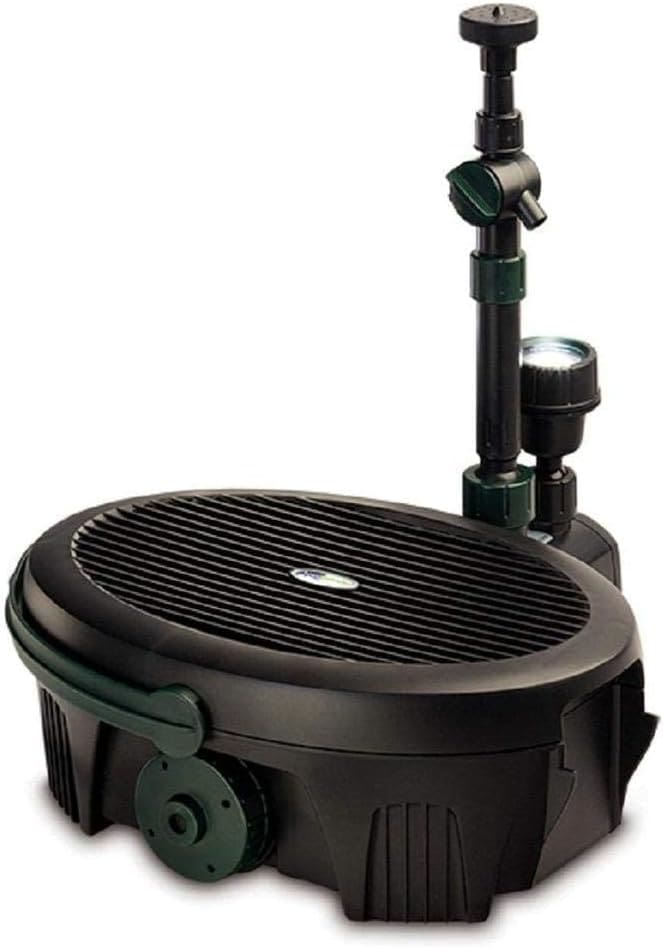

UV Clarifier, LED Spotlight and Fountain, All in One solution for a Clean
Maintenance
All filters require some level of maintenance, but some are more high-maintenance than others. Consider how much time and effort you are willing to put into maintaining your filter. Some filters require frequent cleaning and replacement of filter media, while others require less maintenance.
Budget
Filters come in a range of prices, so consider your budget when choosing a filter. Keep in mind that a higher-priced filter may be more effective and require less maintenance, but may not fit within your budget.
Additional Features
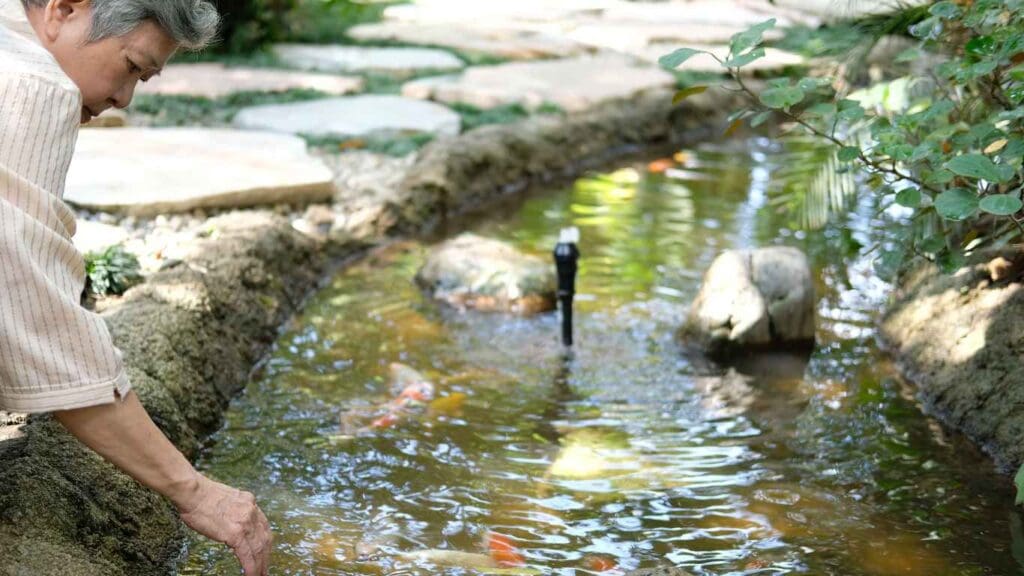

Some filters come with additional features, such as automatic cleaning or backwashing, which can make maintenance easier. Consider whether these features are important to you and whether they are worth the additional cost.
By considering these factors, you can choose the right filter for your koi pond that will effectively clean the water and keep your fish healthy.
Installation Process of Koi Pond Filters
When it comes to installing a filter system for your koi pond, there are several steps you need to follow to ensure that it is done correctly. Here is a brief overview of the installation process:
- Choose the right filter system: Before you begin the installation process, you need to choose the right filter system for your koi pond. There are several types of filter systems available, including mechanical, biological, and combination filters. Make sure you choose the one that is best suited for your pond and your specific needs.
- Select a location: Once you have chosen the right filter system, you need to select a location for it. The filter should be placed in an area that is easy to access and close to the pond. It should also be placed in an area where it will not be affected by direct sunlight or extreme temperatures.
- Prepare the site: Before you begin the installation process, you need to prepare the site where the filter will be installed. This may involve digging a hole for the filter or preparing a base for it to sit on.
- Install the filter: Once the site is prepared, you can begin installing the filter. Follow the manufacturer’s instructions carefully to ensure that the filter is installed correctly. This may involve connecting hoses, pipes, and electrical wires.
- Test the system: Once the filter is installed, you need to test the system to make sure it is working correctly. This may involve running water through the filter and checking the water quality to ensure that it is clean and healthy for your koi.
- Maintain the filter: Finally, it is important to maintain the filter system on a regular basis to ensure that it continues to work effectively. This may involve cleaning the filter, replacing filter media, and checking the system for any signs of damage or wear.
By following these steps, you can ensure that your koi pond filter system is installed correctly and will continue to work effectively to keep your pond clean and healthy for your koi.
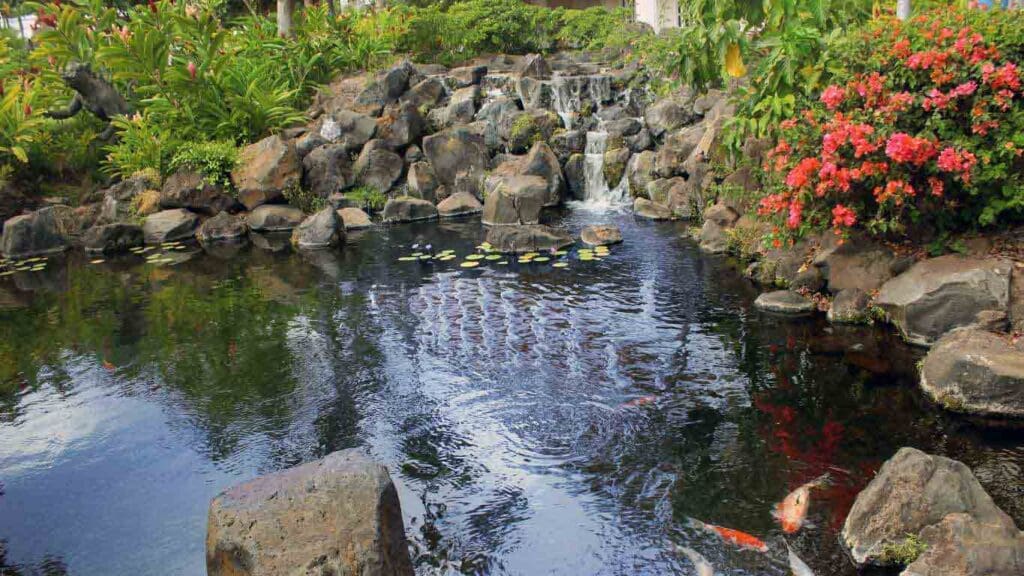

Maintenance of Koi Pond Filters
Once you have installed a filter system in your koi pond, it is essential to maintain it regularly to ensure that it functions correctly and keeps the water clean and healthy for your koi.
Here are some maintenance tips for your koi pond filter:
- Clean the filter media regularly: The filter media is the material that traps and removes debris and waste from the water. Over time, it can become clogged and less effective, so it is crucial to clean it regularly. Check the manufacturer’s instructions for how often to clean the media, but generally, it should be done at least once a month.
- Replace filter media when necessary: Over time, the filter media can become worn out and less effective. If you notice that the media is not cleaning the water as well as it used to, it may be time to replace it.
- Check the pump regularly: The pump is the heart of the filter system and needs to be checked regularly to ensure that it is functioning correctly. Make sure that it is running smoothly and not making any unusual noises.
- Maintain the water level: The filter system needs a consistent water level to function correctly. Make sure that the water level is not too low, as this can cause the pump to overheat and fail.
- Monitor water quality: Regularly test the water quality to ensure that the filter system is working correctly. Test for pH, ammonia, nitrite, and nitrate levels, and adjust as necessary.
By following these maintenance tips, you can ensure that your koi pond filter system functions correctly and keeps your koi healthy and happy.
Common Issues and Solutions
If you have a koi pond, it is important to maintain the water quality and keep your fish healthy. One of the most important components of a healthy koi pond is a filter system. However, even with a good filter system, you may still encounter some common issues. Here are some common issues and solutions to help you maintain your koi pond:
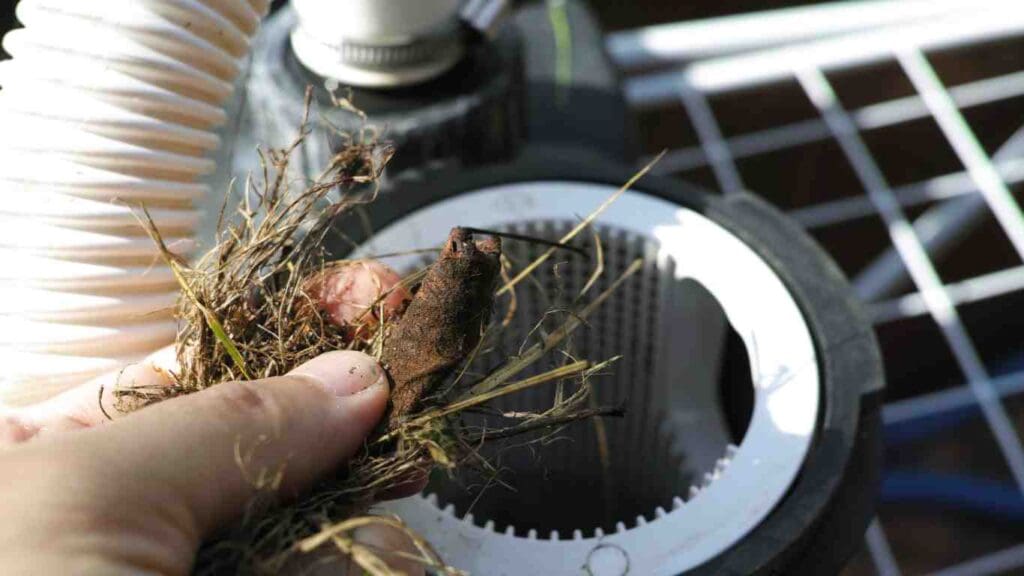

Clogged Filters
Clogged filters are a common issue in koi ponds. Debris and dirt can accumulate in the filter, causing the water to back up and reduce the flow. This can lead to poor water quality and unhealthy fish. To solve this issue, turn off the pump and disconnect the filter. Remove any debris or dirt from the filter and rinse it with clean water. You may need to clean the filter more frequently if you have heavy fish load or if there is a lot of debris in your pond.
Leaking Filters
Another common issue with koi pond filters is leaks. Leaks can occur due to improper installation or wear and tear over time. If you notice a leak, turn off the pump and inspect the filter. Check the seals and connections to see if they are tight and secure. If you find a leak, you may need to replace the seals or connections.
Inefficient Filtration
Inefficient filtration can lead to poor water quality and unhealthy fish. This can occur if the filter is not properly sized for your pond or if it is not functioning properly. To solve this issue, make sure that your filter is properly sized for your pond. You may need to upgrade your filter if you have a heavy fish load or if you have a large pond. Also, make sure that your filter is functioning properly by checking the flow rate and pressure regularly. You may need to adjust the settings or replace the filter media if you notice any issues.
In brief, maintaining a koi pond can be challenging, but with proper care and attention, you can keep your fish healthy and happy. By addressing common issues with your filter system, you can ensure that your pond is functioning properly and providing a healthy environment for your fish.
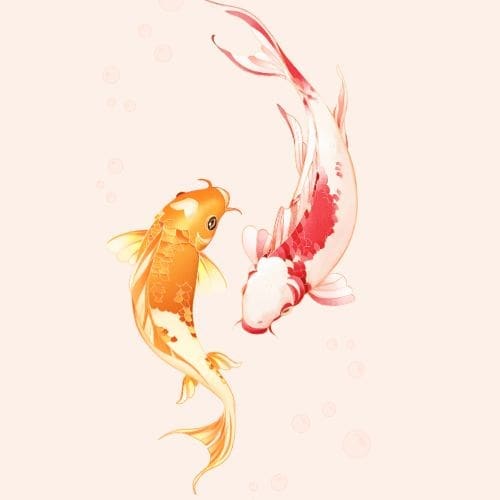

Get the Information You Need Direct from Koi Pond Experts
Join Now!
Final remarks
In brief, it is essential to have a filter for your koi pond to maintain a healthy environment for your fish and plants. Without a filter, the water can become stagnant, leading to the buildup of harmful toxins that can harm your koi.
There are various types of filters available, including mechanical filters, biological filters, and UV clarifiers, each with its unique benefits and drawbacks. When choosing a filter, consider the size of your pond and the number of fish you have to ensure that it can handle the volume of water and waste produced by your koi.
Regular maintenance of your filter system is also crucial to ensure that it operates correctly. This includes cleaning the filter media, checking the water pump, and performing water quality testing regularly. By keeping your filter system in good working order, you can help ensure that your koi pond remains a healthy and thriving ecosystem for your fish and plants.
Overall, having a filter for your koi pond is an essential investment in the health and longevity of your fish. By choosing the right filter and maintaining it regularly, you can enjoy a beautiful and healthy pond for years to come.
Frequently Asked Questions
Do koi ponds require a filtration system?
Yes, koi ponds require a filtration system to keep the water clean and healthy for the fish. Without a filtration system, the water in the pond can quickly become polluted, which can lead to health problems for the koi.
What is the best type of filter for a koi pond?
The best type of filter for a koi pond depends on the size of the pond and the number of fish. Some common types of filters include mechanical filters, biological filters, and UV clarifiers. It is important to choose a filter that is appropriate for the size of your pond and the number of fish you have.
How often should you clean a koi pond filter?
The frequency with which you should clean your koi pond filter depends on the type of filter you have and the size of your pond. As a general rule, you should clean your filter at least once a month during the summer months when the water temperature is warmer. During the winter months, you can clean your filter less frequently.
Can koi survive in a pond without a filter?
Koi can survive in a pond without a filter, but the water quality will not be as good as it would be with a filter. Without a filter, the water in the pond can quickly become polluted, which can lead to health problems for the koi.
What are the benefits of using a biological filter in a koi pond?
Biological filters are designed to remove harmful toxins from the water in a koi pond. They work by creating an environment that is conducive to the growth of beneficial bacteria, which break down waste products and other organic matter in the water. The benefits of using a biological filter in a koi pond include improved water quality, reduced maintenance, and healthier fish.
Is it possible to maintain a clean koi pond without a filter?
It is possible to maintain a clean koi pond without a filter, but it requires a lot of work. You will need to perform frequent water changes, remove any debris from the pond, and use a water clarifier to help keep the water clear. However, using a filter is a much more efficient and effective way to maintain a clean and healthy koi pond.
 1 (509) 228-8646
1 (509) 228-8646


